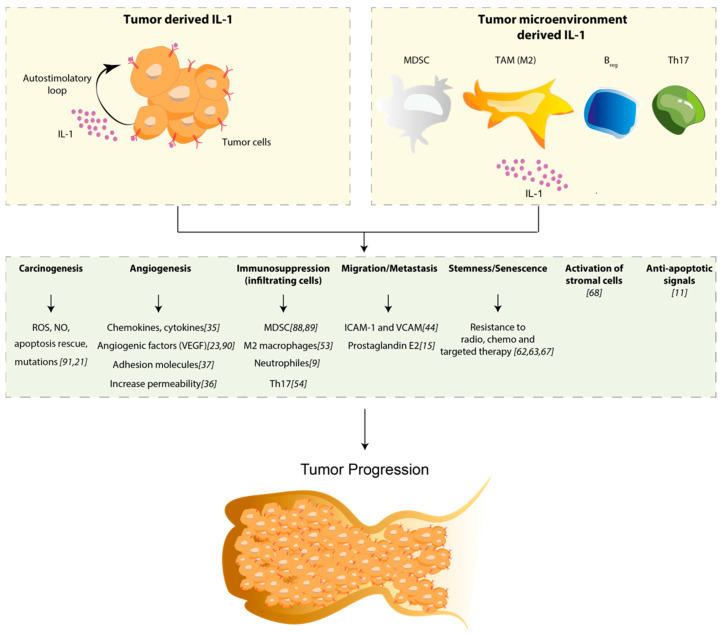Figure 1.
Schematic representation of the role of IL-1 in tumor progression. The upper panel represents two sources of IL-1. Specifically, the tumor-derived IL-1 (upper left) establishes an auto-stimulatory loop that sustains IL-1 synthesis and release, while the tumor microenvironment-derived IL-1 (upper right) arises from immune cells of the myeloid origin: myeloid-derived suppressor cells (MDSC), macrophage-polarized M2 phenotype, regulatory B (Breg) and T helper (Th17) cells. As shown in the figure, the boost of IL-1, released from both tumor and immune cells, induces a wide range of effects: it sustains the production of Reactive Oxygen Species (ROS), and Nitric Oxide (NO) that exacerbate mutation rate rescuing cells from apoptosis; it increases the production of chemokines, cytokines and all adhesion molecules responsible for vascular permeability, leading to angiogenesis and metastasis. It recruits immunosuppressive cells (MDSC, M2 macrophages, neutrophils and Th17) and activates stromal cells in the TME [88,89,90,91]. Finally, IL-1 is described to be involved in drug resistance through the induction of anti-apoptotic signals and senescence.

